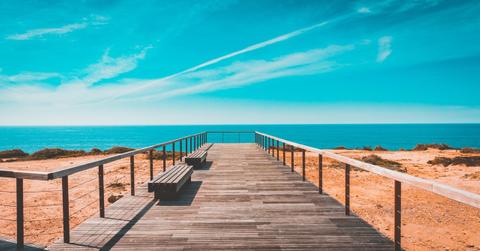Popular NYC Beach Boardwalk Gets Storm-Resistant Makeover
Almost 5 years after Sandy, New York's Rockaway Beach has finished their new boardwalk. As a new standard for shoreline design, this structure was built to withstand the elements and better protect it's locals from future storms.
Updated May 17 2019, 3:43 p.m. ET
When superstorm Sandy hit the New York City region in 2012, it brought with it unimaginable destruction. In the process, it demolished Rockaway Beach’s longstanding boardwalk and the homes near it. Rockaway Beach can be found just an hour south of Manhattan on a narrow, 10 mile peninsula in Queens. Apart from physical damage, Hurricane Sandy took many lives with it, and most of the deaths in the area happened as people were drowned by the surge.
The cost to rebuild the boardwalk and essentially the identity of the community was particularly high because the hurricane destroyed the entire boardwalk and the city had to completely rebuild the area. With the price tag of $70 million per mile, the reconstructing project was a pricey endeavor. Almost five years after the storm, the boardwalk has now been completed and the final bill came out to $340 million. A good amount of that was paid by federal taxpayers as some of it came from the Sandy relief funding which was authorized by Congress.
So what does Rockaway Beach look like now? Today, there is a five and half mile stretch beginning from Beach 19th Street to Beach 126th Street, that has replaced the old vulnerable wooden boardwalk with sand toned concrete on top of millions of pounds of sandbags. The city also added improvements like bike paths and other amenities.
As a result of the catastrophe, city officials feel better prepared for similar events in the future. Parks Commissioner Mitchell J. Silver, FAICP, expressed, “Hurricane Sandy changed the way that we see and build our waterfront parks…we now know that in addition to recreational and ecological amenities, these open spaces are the first line of defense in protecting our city from severe coastal storms. Projects like the Rockaway Boardwalk reconstruction and the East Side Coastal Resiliency plan showcase the progress we've made in the past four years to build smarter and stronger, and to plan for the long-term resiliency of our parkland.”
But why were these areas so vulnerable to begin with? Coastal communities like Rockaway Beach are constantly threatened by the rising sea levels and may be underwater if there is an increase of 6 feet in the near future. The sea level rise can cause a ripple effect into other nearby areas. If the sea level goes up just three feet, LaGuardia Airport could be forever flooded, for example. Manhattan itself is at risk of storm waters coming in every 4 to 5 years.
To give some context, it used to be one in every 100 to 400 years. Climate scientist Radley Horton of the Northeast Climate Science Center and NASA’s Goddard Institute for Space Studies, discussed the possible root of the issue, explaining, “You can see that trend; it’s there. But the question is, is it related to greenhouse gases or something else?” Whether you believe the rising sea level problem is man-made or just nature taking its course, it is undeniably coming a little too close for comfort in many communities.
Other cities, like South Beach, who are facing flooding due to rising sea levels, can look to places like Rockaway Boardwalk as a standard for shoreline design. Robert Freudenberg, Vice President of Energy and Environmental Programs at the Regional Plan Association, suggests that, "adaptation should be a part of every infrastructure project that we do right now.” While most places do not have the financial bandwidth that New York has, these forward thinking improvements should encourage other communities to learn from Rockaway Beach experience and adapt to climate change.
